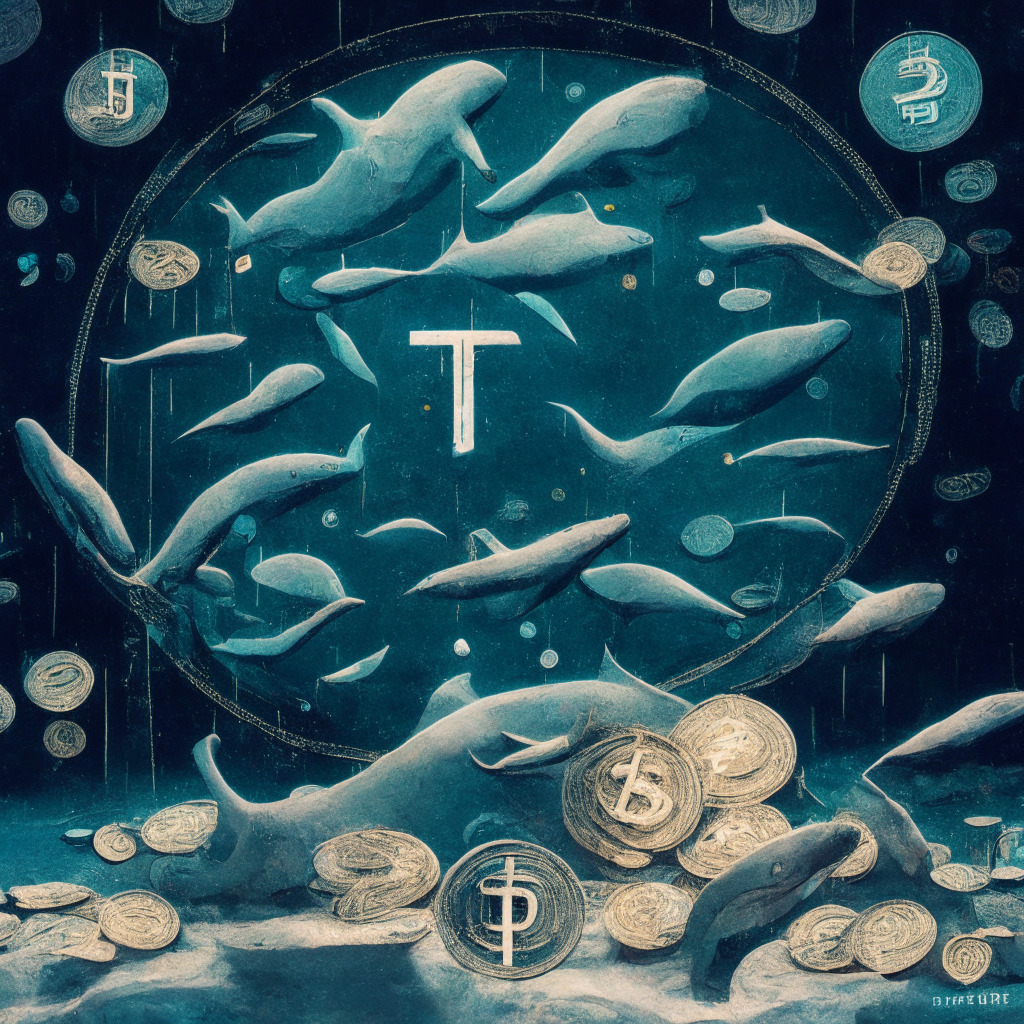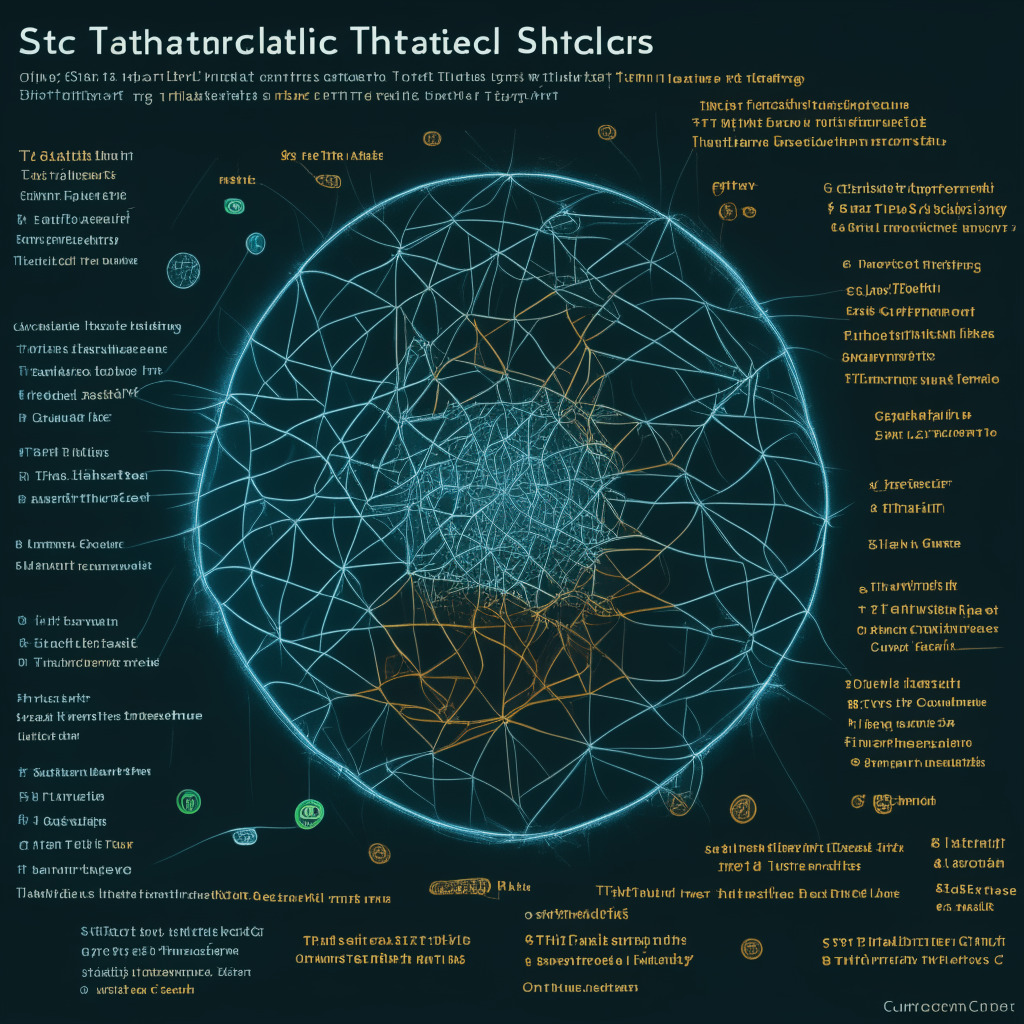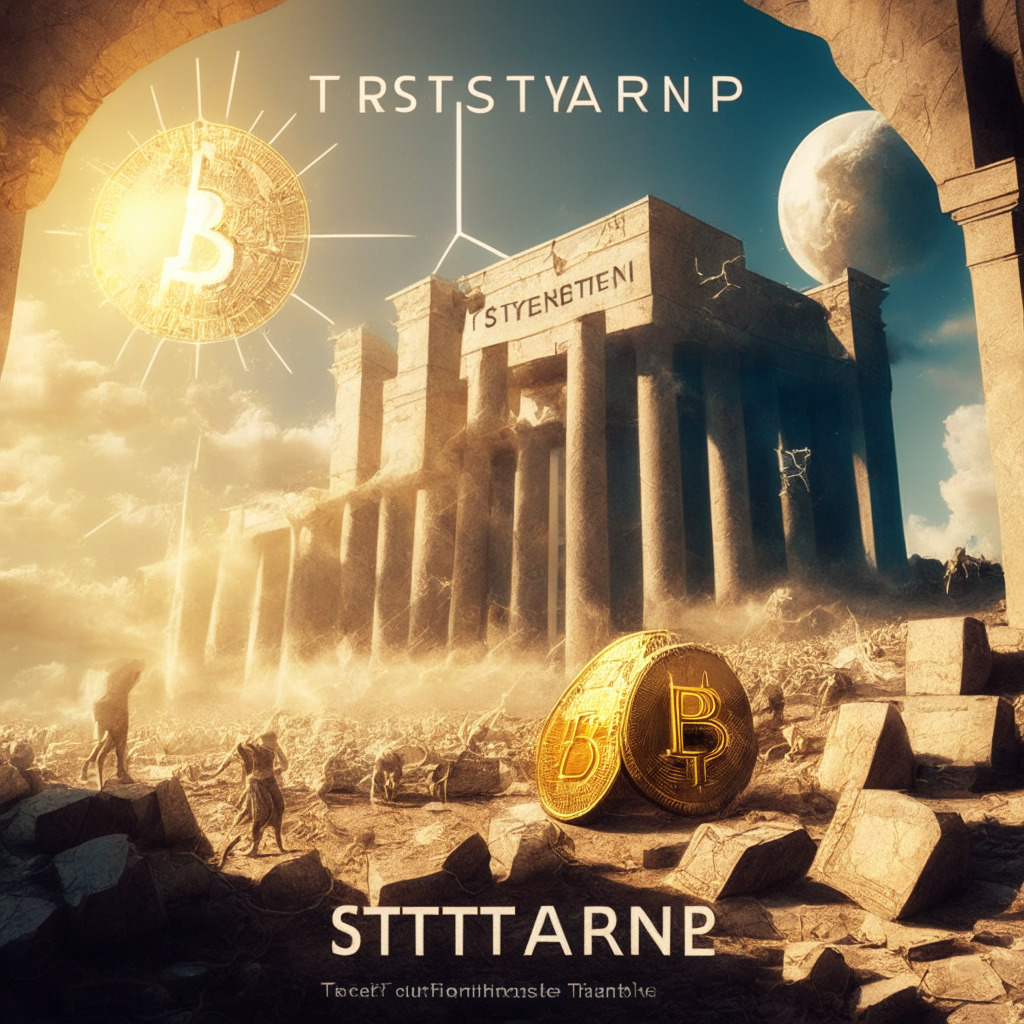Tether Holdings Ltd. is under scrutiny as findings reveal it may have held securities issued by Chinese firms in its reserves backing USDT stablecoin. Regulators question the underlying assets providing USDT’s stability, raising concerns about potential regulatory risks and the stablecoin’s overall reliability.
Search Results for: tether
Diving Into Tether’s Asset Management and Stablecoin Backing: New Insights and Unresolved Debates
The article highlights Tether’s funds distribution across multiple institutions and its reliance on commercial paper to back its stablecoin market cap. Documents from the New York Attorney General’s office offer insights into Tether’s asset storage locations, banking relationships, and asset management practices, amid ongoing concerns within the crypto community.
Chinese Securities, Stablecoin Reserves & Media Outlets: Tether’s Reputation at Stake
Tether addresses reports of backing USDT with Chinese securities, stating the cited materials are outdated and their exposure to Chinese commercial papers was liquidated last year. The company emphasizes the importance of accurate and balanced information for the healthy development of the crypto industry.
Tether’s Chinese Securities Exposure: Unveiling the Mystery and Its Market Impact
Newly disclosed documents reveal that Tether Holdings Ltd., issuer of the largest stablecoin USDT, previously held reserves in Chinese company-issued securities, short-term loans to Chinese companies, and a loan to crypto platform Celsius Network. Concerns arise over Tether’s $5.1 billion lending program, underpinning USDT’s importance for liquidity and stability in cryptocurrency markets.
Crypto Turbulence Amid Fed Policies and Tether Troubles: Navigating Market Uncertainty
Crypto investors face turbulent market conditions as Bitcoin and major altcoins struggle to recover. Falling liquidity and regulatory concerns add to market jitters, while equities gain momentum. Investors should tread carefully and adopt a long-term strategy during these uncertain times.
Depegging Dilemma: Tether’s Turbulent Times Amid Loan Saga and NYAG Revelations
The depegging of stablecoin Tether (USDT) is linked to the loan saga on DeFi platform Curve. Tether Holdings Ltd reveals concerns over sensitive commercial information shared by the Office of the New York Attorney General to Coindesk. The crypto community now fears potential implications from the released documents.
Inflation, Depreciation, and the Rise of Digital Gold: How Tether Leads the Way
This article discusses the increasing appeal of gold and digital gold, such as Bitcoin, as inflation rises and currencies depreciate. Tether Gold aims to capitalize on this trend, potentially playing a pivotal role in decentralized finance while ensuring security measures and overcoming regulatory hurdles.
Tether’s Slight Depegging and AAVE’s Curve Freeze: Analyzing the Impact on Stablecoin Markets
Tether (USDT) experienced a slight depegging from its 1:1 ratio with the US dollar, coinciding with AAVE’s decision to freeze Curve (CRV) use as collateral for loans. This prompted whales and investors to capitalize on arbitrage opportunities, leading to Tether’s depegging at $0.996.
Tether’s USDT Losing Dollar Peg: Impact on Stablecoin Pools and Crypto Landscape
Tether’s USDT stablecoin lost its dollar peg, leading to an imbalance in stablecoin trading pools as traders exchanged USDT for USDC and DAI. This resulted in USDT balances on Curve’s 3pool rising to over 70%, straying from the intended equal distribution among the three stablecoins.
Tether Struggles to Maintain Dollar Peg: Impact on Stablecoin Confidence and Markets
Tether (USDT) recently fell below its dollar peg, trading at $0.996, raising concerns among stablecoin users. CTO Paolo Ardoino assured the company’s readiness to face challenges. However, skepticism surrounding Tether’s dollar-backing and decreased investor confidence emphasize the importance of maintaining stablecoin pegs to fiat currencies.
USDT Sell-off Raises Concerns: Exploring Alternatives and Tether’s Unwavering Commitment
Millions worth of USDT stablecoins sold off on Uniswap and Curve pools, raising concerns among traders and suggesting a preference for DAI and USDC over Tether. This could indicate a diverse and competitive stablecoin market, benefiting users while reflecting potential regulatory concerns.
Is Tether’s USDT Stablecoin Under Pressure? Examining Unusual Selling Activity
Speculation mounts that Tether’s USDT stablecoin may be under pressure, with liquidity pools on Uniswap and Curve protocols flooded with USDT sellers. A potential USDT depeg could be catastrophic for the crypto economy, raising concerns over its liquidity and stability amidst growing market share.
Tether’s $1B Minting Spree: USDT Dominance Grows Amidst Competitor Challenges
Tether has minted another $1 billion worth of USDT on the Ethereum blockchain, totaling over $16 billion in 2023. The latest mint will replenish inventory and facilitate issuance requests and chain swaps, maintaining Tether’s stablecoin market dominance amidst challenges faced by other issuers like Circle.
El Salvador’s Bitcoin Journey: Tether’s $1 Billion Renewable Energy Investment for Mining
Tether commits to El Salvador’s $1 billion Volcano Energy project, harnessing renewable energy for future Bitcoin mining operations. This strategic investment aims to create value while addressing the environmental impact of Bitcoin mining, fostering sustainable infrastructure and advancing digital currencies.
Restoring Trust in Crypto Lending: Tether’s Response to FTX Collapse & Media Skepticism
The FTX exchange collapse has spurred fear and uncertainty in the crypto community. Facing this challenge, Tether, the largest stablecoin issuer, aims to restore consumer faith by ceasing lending from its reserves and emphasizing fully-collateralized loans backed by liquid assets.
Tether Invests in El Salvador’s Volcano Energy: Eco-friendly Bitcoin Mining or Environmental Risk?
Tether announced a $250 million investment in El Salvador’s Volcano Energy project, aimed at creating a major Bitcoin mining farm powered by solar and wind energy. However, concerns regarding environmental impact and resource management persist, urging cautious progress towards a sustainable crypto mining future.
Ethereum Rivals Visa, Tether Hits Highs, and Global Crypto Trends: A Weekly Roundup
This week, Ethereum’s transaction volume rivaled Visa, Tether’s market cap hit a record high, and an Ethereum ICO wallet resurfaced with $15 million. Binance dominated headlines with trading discounts and privacy coin delisting news, while CBDC discussions, crypto regulations, and global partnerships shaped the future of the industry.
Tether’s USDT Reclaims All-Time High Market Cap Amid Stablecoin Controversy and Competition
Tether’s stablecoin USDT has regained its all-time high market cap of $83.2 billion, despite challenges in the stablecoin market and criticism over its reserve transparency. USDT’s perceived safety from U.S. regulators and its growing use for global payments contribute to this resurgence, highlighting peg stability as a priority for users.
Tether’s Record Market Cap: Resilience, Transparency, and Crypto Mining Ventures
Tether’s market cap reaches a new high of $83.2 billion, recovering from a $20 billion loss last year. Its resilience, industry-leading transparency, and recent ventures into crypto mining and sustainable practices contribute to its regained trust and success in the cryptocurrency landscape.
Tether Invests in Georgia’s Crypto Scene: Analyzing the Impact & Challenges of Adoption
Tether plans to expand in the Republic of Georgia by investing in CityPay.io, a leading payment processing company. Georgia is becoming an attractive destination for cryptocurrency companies, thanks to its progressive regulatory framework and initiatives like Binance’s new blockchain hub.
Tether Integration in Private Banks: New Era, Partnerships, and Global Adoption Challenges
The integration of Tether payment rails by Xapo Private Bank marks a new era, providing an alternative to SWIFT rails and showcasing stablecoins’ prominence in the financial sector. Blockchain adoption is recommended for India’s banks, while Binance explores partnerships with traditional financial institutions, and Layer 1 blockchain XDC Network partners with SBI VC Trade Co. Ltd.
Tether Invests in CityPay.io: A Shift in Stablecoin Usage Patterns and Future Prospects
Tether invests an undisclosed sum in payment processor CityPay.io, integrating USDT as a payment option in over 600 locations. This move aligns with Tether’s plan to allocate excess profits to infrastructure and payments projects, expanding stablecoin utility beyond just a trading tool.
Tether’s Sustainable Bitcoin Mining in Uruguay: Eco-Friendly Move or Shaky Investment?
Tether is venturing into sustainable Bitcoin mining in Uruguay, focusing on environmentally friendly operations. With over 98% renewable energy generation, the country offers a unique opportunity for greener crypto mining. Tether’s commitment aims to minimize ecological footprints and uphold the security and integrity of the Bitcoin network.
Tether Leverages Uruguay’s Renewable Energy for Bitcoin Mining: Eco-Friendly Progress or Not Enough?
Tether expands into Bitcoin mining in Uruguay, leveraging the country’s 94% renewable energy sources. While reducing ecological footprint, it also raises environmental concerns and emphasizes the importance of balancing innovation with ecological impact.
Tether’s Green Bitcoin Mining Strategy in Uruguay: A Sustainable Future or Just Hype?
Tether plans to launch a Bitcoin mining operation in Uruguay, primarily due to the country’s remarkable renewable energy capabilities. With over 98% of electricity generated from renewables, Tether aims to minimize its ecological footprint while maintaining Bitcoin network security and integrity.
Sustainable Bitcoin Mining: Tether’s Move to Uruguay and its Impact on Environment & Economy
Tether, the largest stablecoin company, plans to mine Bitcoin in Uruguay using renewable energy for a minimal ecological footprint. The move aims to diversify and strengthen the company’s stablecoin reserves, while addressing concerns about the environmental impact of crypto mining and highlighting potential economic benefits for local communities, particularly in rural areas.
Tether’s Leap into Sustainable Bitcoin Mining: Boon or Smokescreen?
Tether has invested in a sustainable Bitcoin mining facility in Uruguay, aiming to promote responsible and eco-friendly mining practices. However, the company must also address transparency and security concerns to maintain trust in the stablecoin market.
Tether Energy: Advancing Bitcoin with Sustainable Mining in Uruguay – Pros and Cons
Tether announces its dedication to advancing Bitcoin by investing in renewable energy production and sustainable Bitcoin mining in Uruguay through a new venture called Tether Energy, promoting eco-friendly practices within the cryptocurrency industry.
Binance Bridges Centralized and Decentralized Worlds with Polkadot-Based Tether
Binance now supports deposits and withdrawals for Polkadot-based Tether (USDT), improving convenience and liquidity within the ecosystem, and enhancing interoperability between centralized and decentralized platforms. This development signifies growing acceptance and credibility of Polkadot’s potential within the wider crypto sphere.
Tether’s USDT: Surging Market Cap and Falling Trading Volume – What’s the Catch?
Despite Tether’s USDT stablecoin market cap surging to $83.4 billion, its trading volume has experienced a sharp decline, falling below $10 billion for the first time since March 2019. This trend raises questions about the stablecoin’s actual usage and brings concerns about USDT’s value and lack of audits back to the surface.
Strike’s Tether Integration: Bridging the Gap Between Traditional Finance and Crypto
Strike, a leading digital payments platform using Bitcoin’s Lightning Network, recently integrated Tether (USDT) to offer users enhanced financial capabilities. This enables seamless USDT transactions and provides reliability while bridging the gap between traditional financial systems and cryptocurrencies and fostering widespread digital currency adoption.
Tether Reduces Banking Risk & Ripple’s SEC Case Win: Impact on the Crypto Industry
Tether reduced counterparty risk by withdrawing $4.5 billion from banks, reinforcing its USDT stablecoin, while Ripple scored a victory against the SEC in their legal dispute. Simultaneously, security concerns arise as Ledger launches its recovery service for lost seed phrases.































